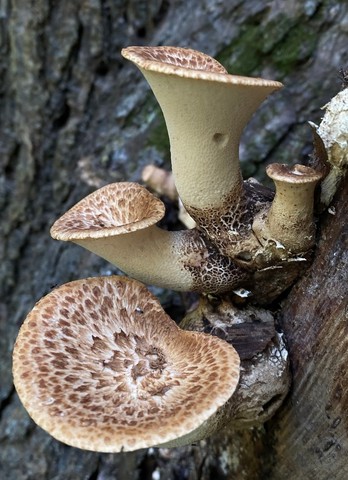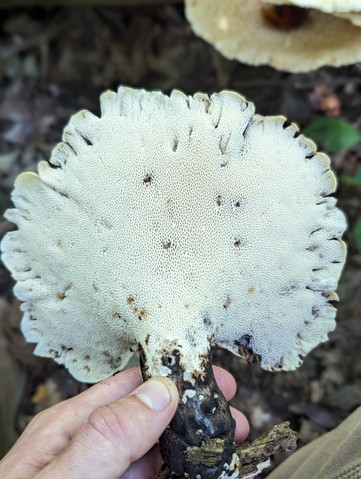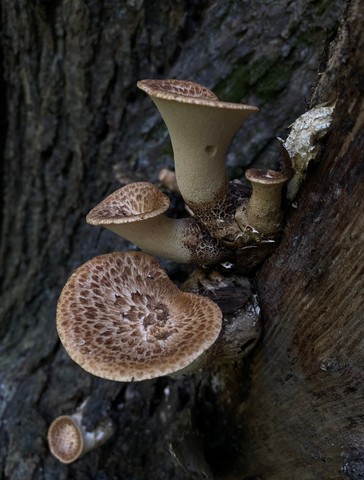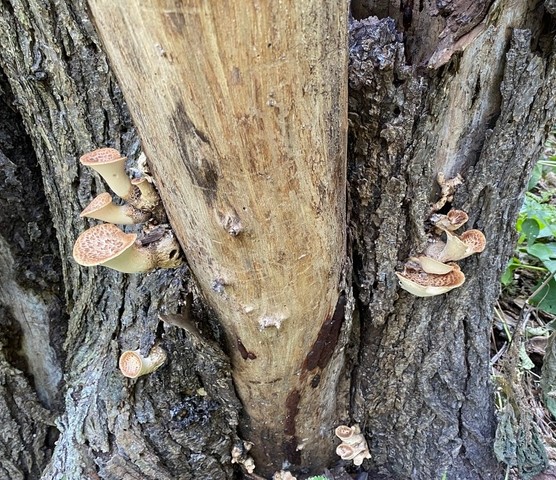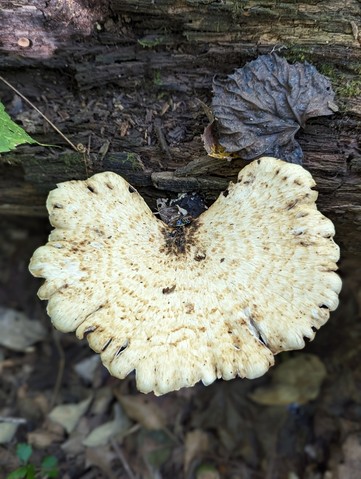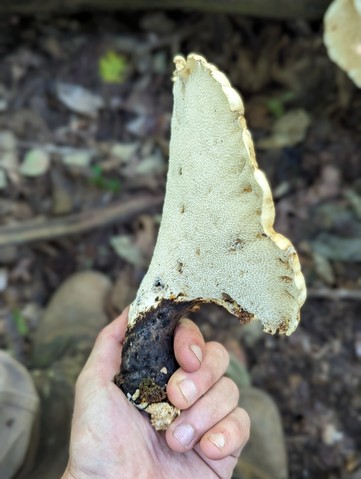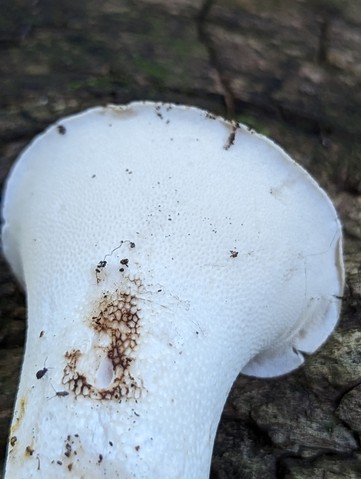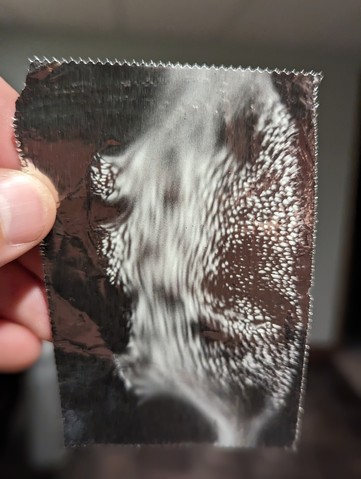Dryad's Saddle
Cerioporus squamosus
Life > Fungi > Basidiomycota > Agaricomycotina > Agaricomycetes > Polyporales > Polyporaceae > Cerioporus
Description
Key features include:
- Flattened scales (squamules) on the cap surface. A feature from which the mushroom gets its name C. squamosus.
- Large, honeycomb-like pores under the cap that extend down the stem. The pore surface is not separatable from the cap.
- The distinctive smell of watermelon rind.
- White spore print.
This is a large and common mushroom in Nebraska. It's most noticable by its scales on the cap surface and the smell of watermelon rind. The cap color is pale tan to creamy yellowish with brown to black scales. When old, the cap color turns whitish with reddish to blackish scales sometimes with a dark brown to black patch in the center of the cap and black velvet extending from the base of the stem upwards. The cap shape is variable, but mostly semicircular to kidney-shaped to fan-shaped. The stem is generally tough and cork-like, especially with age. This species can get particularly large, generally a cap of 5-30 cm wide and 1-4 cm thick and stem 1-4 cm thick and 2-8 cm long.
Habitat
Dryad's Saddle can be found fruiting from decaying logs, stumps, and living trees on a wide variety of broadleaf trees (especially Silver Maple and Boxelder) in woodland settings, urban locations, and roadsides. It's known to be both saprobic and parasitic.
Abundance
Dryad's Saddle is the most commonly sighted mushroom in Nebraska, according to iNaturalist. It is generally found growing alone or in small groups.
Fruiting Period
This mushroom can be found fruiting from spring through fall. However, it prefers cooler weather and is most abundant in the spring and fall. This is a common mushroom to find while morel hunting. Although the mushroom is not perennial, its older forms can be found in the winter, slowly decomposing, making it discoverable year-round.
Similar Species
- Cerioporus varius is a close relative that is smaller in size.
Edibility
This is a good edible mushroom when collected young in its small button stage. It's easy to determine edible parts, as they will be soft, pliable, and break apart by hand. With age, the mushroom becomes leathery and undesirable. Older specimens can be collected for the table by cutting the softer edges on the cap margin with a knife. All wild mushrooms should be cooked thoroughly before eating. Please see our disclaimer before eating any wild mushrooms.
Toxicity
This mushroom is not known to be toxic. However, allergies and sensitivities may affect individuals differently. Please use caution when eating any wild mushrooms.
Observations
September 11th, 2023 Indian Cave State Park

#382
- Growing caespitose on fallen well-rotted (brown) hardwood log in low, moist, mixed oak/hickory woodland.
- Caps semicircular with a wavy margin, brown squamules radiating outward from the center.
- Hymenium with light honeycomb like pores.
- Stipe black, matte, tough and corklike.
Additional Info
- Smell: watermelon rind
- Taste: watermelon rind
GTCGTAACAAGGTTTCCGTAGGTGAACCTGCGGAAGGATCATTACTGAGTCTTGAAGAGGTTGCAGCTGGTCTTATCAGGCAAGTGCTCGCCTCGTTCAAATCCACTCTACACCTGTGCACTTACTGTGGACTTTGGTATTTTTGGAGGGTCCTTTGGCCCTTTATGAATCCGGGTTCATGTTTTATTATATATACGCTTCAGTATTGAGAATGTGTATTGTGATGTAACGCATCGTTATACAACTTTCAGCAACGGATCTCTTGGCTCTCGCATCGATGAAGAACGCAGCGAAATGCGATAAGTAATGTGAATTGCAGAATTCAGTGAATCATCGAATCTTTGAACGCACCTTGCGCTCCTTGGTATTCCGAGGAGCACACCTGTTTGAGTGTCATGAAATTCTCAACCTTACAAACTTTTGTGTTTGATTTGGCTTGGAGTTGGAGGCTTGCTGATGGGAAATTCCTTTGGCTCCTCTCAAATGCATTAGCTTGGTTCCTTGCGGATTGGCTCCTGGTGTGATAAATGTTTACGCCGCAGCTGTTGAAGCGATTTGGGCAAGCTCCTAACCGTCTCGATATTGAGAGACAGCTTTTTGAACATGACATCTGACCTCAAATCAGGTGGGACTACCCGCTGAACTT
References
Kuo, M. (2015, April). Polyporus squamosus. Retrieved from the MushroomExpert.Com Web site: http://www.mushroomexpert.com/polyporus_squamosus.html
Created December 15, 2025 at 10:41 AM
